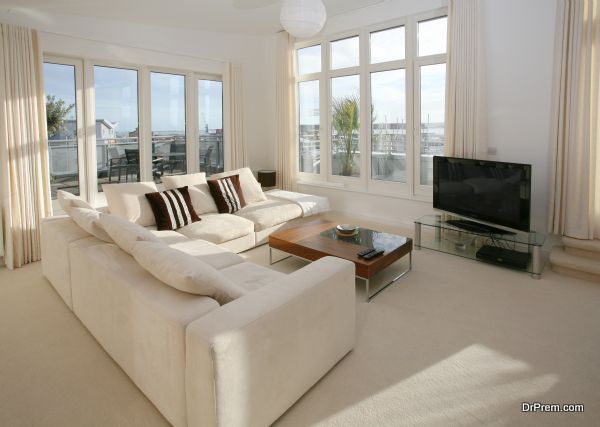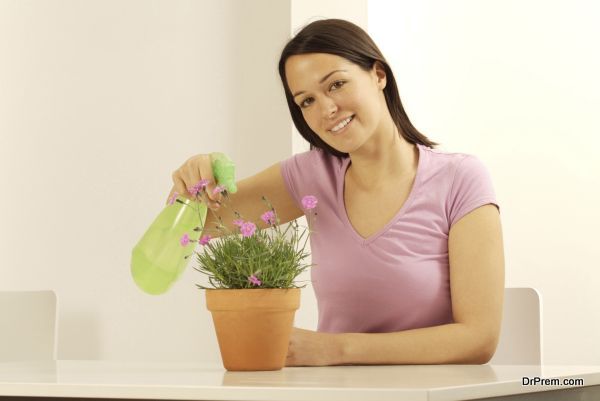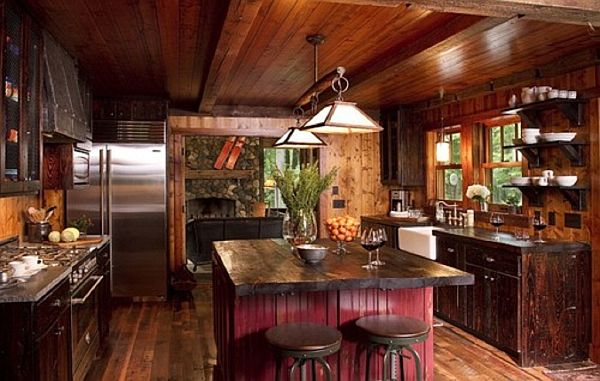Be it a scorching hot summer picnic day or a gloomy monsoon sky engulfed by the gnarly clouds, intense humidity is definitely not one’s ally. Humidity affects the house and interiors, as it never lets the clothes to get dry and snatches the total freshness and the zest at a meeting or a date, leaving you with clammy attire and unpleasant sweat patches!
Well that’swhat the outdoor story is! When you are at home, an optimum level of humidity (40%-45 %) is generally favored. Where it is less than that, it is too dry and parching, and even more than that could cause a substantial level of discomfort. High humidity content also increases the chances of infection and air-borne diseases. People with a weak immune system or allergic to respiratory ailments are the badly affected. Not only this, but moisture breeds fungus too. Imagine the extra humidity in monsoon causing damp walls that let water seep in and destroy the interiors, furniture, home decors and causing the growth of mould or fungus in the kitchen cabinet!
But keeping away excessive moisture off your house is easier than you think. Here is a list of things you can do to keep excess humidity in any weather aloof from your home.

- Dehumidifiers: Dehumidifiers, as the very name suggests, are electronic gadgets that soaks up the extra moisture from the surroundings. These are generally used at high humidity locations for indoor purposes.
- Waxing &Polishing: Extra humidity increases the chances of growth of mould or fungus on wood and thus destroys your luxurious voguish furniture. However, waxing, polishing and moisture resistant glue can save closets, wardrobes and rest furniture from moulds by cutting off the moisture contact of the surface.
- Water-proofing:The water-supply lines, tanks, etc., should always be lubricated like paints or plastic wraps which reduces humidity and rusting as well. The walls and pillars of a house are its souland remember moisture on them can cause havoc to the soul of your house. Usage of damp-resistant elastomeric paints, sealant, etc can avoid roof dampness, cracks, seepage for a long time. Dripping pipes and faucets should be taken care of to reduce the chances of creating for the vapors.
- Ventilation: A properly balanced attic ventilation system ensures airflow and sunlight thereby accelerating the evaporation of the in-built moisture. Fresh air and sunlight forces out the stale humid air and kill germs. Also high speed fans, exhaust fans etc. in bathroom or kitchen reduces the moisture level.
- Indoor Plants: A high humid ambiance is a germ breeding ground. A small antibacterial plant like neem can kill moulds and germs. In fact, nowadays this special kind of dehumidifier houses plant is used by many people, within their house which not only serves the purpose of dehumidification but also it makes the house germ free. The Lemon balm is a mosquito repellent.
Plants like peace lily, Boston fern, English ivy at the corner of the dining hall or living room not only adds an extra edge to your house decors and embellishment, but also soak up moisture from air. So these are some of the extremely important eco-friendly dehumidifiers too which are mostly used in many houses today.But remember do not keep too many plants inside the room as this can increase carbon dioxide concentration and moulds as well.
- Drying: Dry your damp or wet clothes outside as wet clothes increases the moisture content of your house. Also check for water logged in or stagnant water. Keep the toilets, kitchen and washrooms clean and dry. Use salt or silica as these soak up moisture till saturation. Do not use damp carpets, cushions or curtains. Increase the temperature of the living room if required as this decreases the relative humidity.
- Doors and Windows: Open the windows up to let the air in. Also protect the windows and doors with special frame casing, or moisture resistant oils and paints to avoid the growth of fungi and moulds. In monsoon, it is recommended to let the doors open when it does not shower to speed up the drying process of the rooms.
Too much moisture available within the house is not at all good as it causes the growth of various germs and disease.




